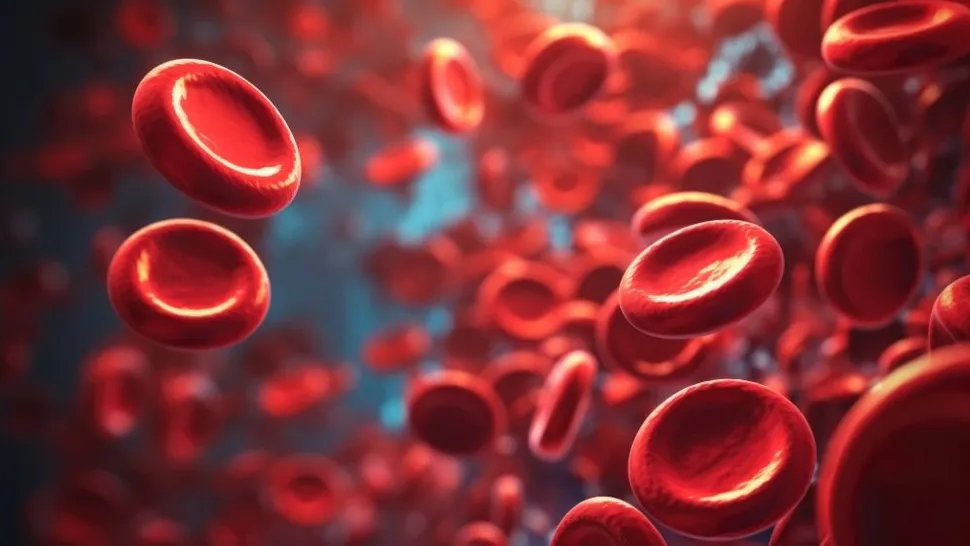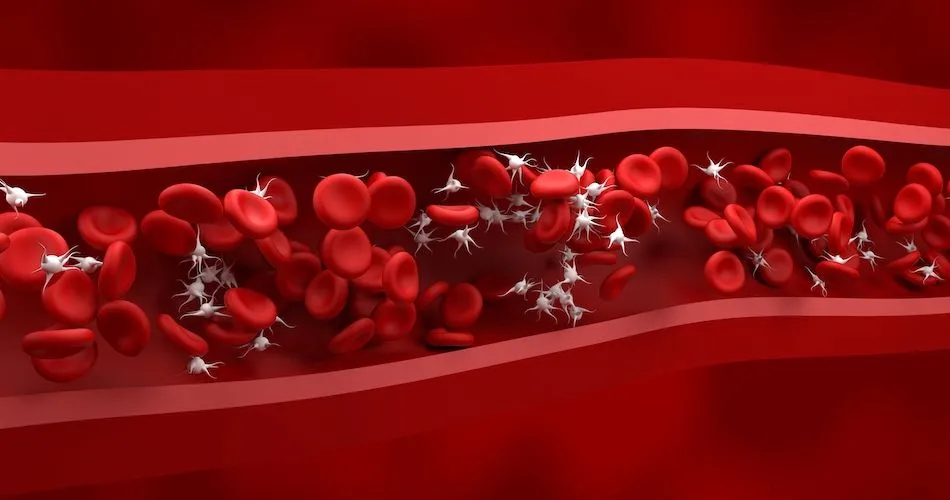Testing a New Combination Therapy for Myelofibrosis Treatment

Janus kinase inhibitors (JAKis) are effective treatments to reduce myelofibrosis symptoms, such as an enlarged spleen size, but they have little impact on the disease itself. New, innovative treatments are needed to elicit deep responses.
Dr. Naveen Pemmaraju (MD Anderson Cancer Center, Texas) discusses one of these novel treatments: Navitoclax (NAV, AbbVie), which is being tested for myelofibrosis patients in a Phase III (3) trial in combination with a JAKi, ruxolitinib (Jakavi, Novartis). In this specific abstract, ruxolitinib is referred to as RUX.
This interview was obtained at the 2024 European Hematology Association Conference.
TRANSFORM-1 Study Details
The study, called TRANSFORM-1, involved adults with a specific type of blood cancer called myelofibrosis (MF).
These participants were considered to be at intermediate-2 or high risk according to a scoring system called DIPSS+. They also had enlarged spleens and were generally in good physical condition (able to perform daily activities).
The participants were divided into two groups:
- One group received a combination of a placebo (a substance with no active drug) and a drug called RUX.
- The other group received the combination of navitoclax (NAV) and ruxolitinib (RUX).
The starting dose of NAV depended on the participant's platelet count (a type of blood cell):
- If platelets were high (above 150), they started with a higher dose (200 mg/day).
- If platelets were lower (150 or less), they started with a lower dose (100 mg/day) that could be increased to 200 mg/day.
The primary goal of this study was to determine the number of participants who had a 35% or greater reduction in spleen size after 6 months of treatment.
Secondary goals included:
- Changes in symptoms like fatigue and physical functioning.
- Response in anemia (low red blood cells).
- Patient-reported outcomes (how the patients felt about their symptoms and quality of life).
Researchers also looked at genetic mutations in the participants and changes in these mutations over time.
Key Findings from the TRANSFORM-1 Study
The TRANSFORM-1 study showed that the combination of NAV and RUX was more effective than the combination of a placebo and RUX in reducing spleen size and improving some symptoms in patients with myelofibrosis. However, both treatments had a similar impact on fatigue and physical functioning.
63% of participants in the NAV+RUX group had a 35% reduction in spleen size by week 24 compared to 32% in the placebo+RUX group. This result was statistically significant, meaning it was unlikely to be due to chance.
Compared to the placebo+RUX group, more participants in the NAV+RUX group had positive changes in their symptoms and anemia response.
Safety Profile and Side Effects
Low platelet and red blood cell counts, diarrhea, and low white blood cell counts were common side effects in the NAV+RUX group. Serious side effects occurred in 28% of the NAV+RUX group and 38% of the placebo+RUX group.
Conclusion
The TRANSFORM-1 study highlights the statistically significant benefits of combining NAV with RUX in treating people with myelofibrosis who have never been treated with JAK inhibitors.
This combination therapy led to a two-fold improvement in spleen volume reduction by week 24 compared to the placebo and RUX combination, even in patients with poor prognostic factors.
The superiority of NAV+RUX was consistent across various subgroups throughout the study.
Patient-reported outcomes showed that both treatment groups had similar symptoms and improvements in physical functioning. However, the NAV+RUX group experienced fewer serious side effects, and no new safety issues were found.
These findings underscore the potential of the NAV+RUX combination as a strong treatment option for myelofibrosis, particularly for those yet to receive JAKis in their treatment.
If you’re interested in participating in a clinical trial, find one that’s right for you today:
Sources:
- EFFICACY AND SAFETY OF NAVITOCLAX IN COMBINATION WITH RUXOLITINIB VERSUS RUXOLITINIB PLUS PLACEBO IN PATIENTS WITH UNTREATED MYELOFIBROSIS IN THE PHASE 3 RANDOMIZED, DOUBLE-BLIND TRANSFORM-1 STUDY
- Efficacy of Navitoclax and Ruxolitinib | Naveen Pemmaraju, MD | EHA 2024
Janus kinase inhibitors (JAKis) are effective treatments to reduce myelofibrosis symptoms, such as an enlarged spleen size, but they have little impact on the disease itself. New, innovative treatments are needed to elicit deep responses.
Dr. Naveen Pemmaraju (MD Anderson Cancer Center, Texas) discusses one of these novel treatments: Navitoclax (NAV, AbbVie), which is being tested for myelofibrosis patients in a Phase III (3) trial in combination with a JAKi, ruxolitinib (Jakavi, Novartis). In this specific abstract, ruxolitinib is referred to as RUX.
This interview was obtained at the 2024 European Hematology Association Conference.
TRANSFORM-1 Study Details
The study, called TRANSFORM-1, involved adults with a specific type of blood cancer called myelofibrosis (MF).
These participants were considered to be at intermediate-2 or high risk according to a scoring system called DIPSS+. They also had enlarged spleens and were generally in good physical condition (able to perform daily activities).
The participants were divided into two groups:
- One group received a combination of a placebo (a substance with no active drug) and a drug called RUX.
- The other group received the combination of navitoclax (NAV) and ruxolitinib (RUX).
The starting dose of NAV depended on the participant's platelet count (a type of blood cell):
- If platelets were high (above 150), they started with a higher dose (200 mg/day).
- If platelets were lower (150 or less), they started with a lower dose (100 mg/day) that could be increased to 200 mg/day.
The primary goal of this study was to determine the number of participants who had a 35% or greater reduction in spleen size after 6 months of treatment.
Secondary goals included:
- Changes in symptoms like fatigue and physical functioning.
- Response in anemia (low red blood cells).
- Patient-reported outcomes (how the patients felt about their symptoms and quality of life).
Researchers also looked at genetic mutations in the participants and changes in these mutations over time.
Key Findings from the TRANSFORM-1 Study
The TRANSFORM-1 study showed that the combination of NAV and RUX was more effective than the combination of a placebo and RUX in reducing spleen size and improving some symptoms in patients with myelofibrosis. However, both treatments had a similar impact on fatigue and physical functioning.
63% of participants in the NAV+RUX group had a 35% reduction in spleen size by week 24 compared to 32% in the placebo+RUX group. This result was statistically significant, meaning it was unlikely to be due to chance.
Compared to the placebo+RUX group, more participants in the NAV+RUX group had positive changes in their symptoms and anemia response.
Safety Profile and Side Effects
Low platelet and red blood cell counts, diarrhea, and low white blood cell counts were common side effects in the NAV+RUX group. Serious side effects occurred in 28% of the NAV+RUX group and 38% of the placebo+RUX group.
Conclusion
The TRANSFORM-1 study highlights the statistically significant benefits of combining NAV with RUX in treating people with myelofibrosis who have never been treated with JAK inhibitors.
This combination therapy led to a two-fold improvement in spleen volume reduction by week 24 compared to the placebo and RUX combination, even in patients with poor prognostic factors.
The superiority of NAV+RUX was consistent across various subgroups throughout the study.
Patient-reported outcomes showed that both treatment groups had similar symptoms and improvements in physical functioning. However, the NAV+RUX group experienced fewer serious side effects, and no new safety issues were found.
These findings underscore the potential of the NAV+RUX combination as a strong treatment option for myelofibrosis, particularly for those yet to receive JAKis in their treatment.
If you’re interested in participating in a clinical trial, find one that’s right for you today:
Sources:

about the author
Audrey Burton-Bethke
Audrey is a content writer and editor for the HealthTree Foundation. She originally joined the HealthTree Foundation in 2020. Audrey loves spending time with her supportive husband, energetic four-year-old, and new baby.
More on Conferences
Trending Articles
Upcoming Events
Get the Latest Myeloproliferative Neoplasm Updates, Delivered to You.
By subscribing to the HealthTree newsletter, you'll receive the latest research, treatment updates, and expert insights to help you navigate your health.
Together we care.
Together we cure.
3x Faster.












